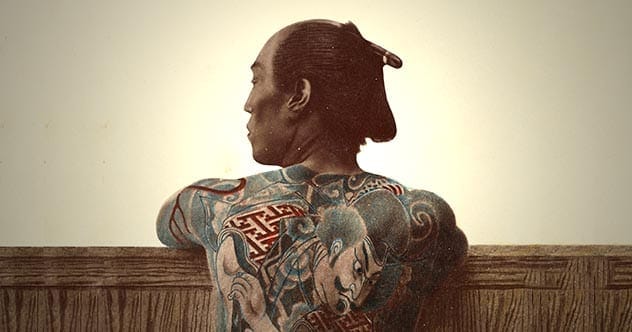For centuries, Japan has captivated the world with its unique culture and traditions. One of the most fascinating aspects of the country is its diverse array of art forms. These arts reflect the Japanese appreciation for beauty, precision, and harmony with nature. Let’s explore ten uniquely Japanese art forms that showcase the country’s incredible artistic heritage.
Kintsugi
Kintsugi, or “golden joinery,” is the Japanese art of repairing broken pottery with lacquer dusted with gold, silver, or platinum. Rather than hiding the cracks, Kintsugi celebrates them as part of the object’s history. This art form embodies the philosophy of Wabi-Sabi, which finds beauty in imperfection and impermanence.
Legend says that Kintsugi originated when a Japanese lord broke his favorite tea jar and had it repaired. The result was so stunning that it gave birth to this unique art form. Kintsugi teaches us that even broken things can become more beautiful and valuable than before.
Kabuki
Kabuki is a classical Japanese dance-drama known for its elaborate costumes, stylized movements, and distinctive makeup. Originating in the early 17th century, Kabuki was initially performed by women, but later, due to social restrictions, it was performed exclusively by men.
Kabuki performances often depict historical events, moral conflicts, and love stories. The actors use exaggerated gestures and vocalizations to convey emotions, creating a visually and aurally captivating experience. Kabuki remains a cherished part of Japanese culture, attracting audiences of all ages.
Origami
Origami, the art of paper folding, is perhaps one of the most well-known Japanese art forms. It involves transforming a flat sheet of paper into a sculpture through folding and creasing techniques. The word “origami” comes from “oru” (to fold) and “kami” (paper).
Origami has a rich history in Japan, dating back to the 6th century when paper was first introduced from China. Initially, origami had ritual significance, but over time, it evolved into a popular art form. The story of Sadako and the 1000 paper cranes is a poignant example, symbolizing hope and peace.
Dogu Figures
Dogu figures are ancient clay figurines from the Jomon period (14,000–400 BCE) of Japan. These enigmatic figures often have large eyes and unique designs, leading to speculation about their purpose. Some believe they represented mother goddesses or were used in fertility rituals.
While the exact meaning of Dogu figures remains a mystery, their artistic and historical significance is undeniable. These figures provide valuable insights into the beliefs and practices of early Japanese civilization. Their unique appearance continues to fascinate and inspire artists and researchers alike.
Bonseki
Bonseki, meaning “tray rocks,” is the art of creating miniature landscapes on a black tray using white sand, pebbles, and small rocks. This art form is rooted in Zen Buddhism and emphasizes the process of creation rather than the final product. Bonseki is known for its ephemeral nature.
The practice of Bonseki is said to have originated in the 7th century. The act of arranging the sand and stones is a meditative experience, promoting peace and mindfulness. The temporary nature of Bonseki highlights the transient beauty of life, echoing the principles of Wabi-Sabi.
Irezumi
Irezumi is the traditional Japanese art of tattooing. These tattoos are often large and elaborate, covering entire areas of the body. Historically, Irezumi was associated with the Yakuza, the Japanese mafia, but today it is appreciated as a unique form of artistic expression.
Traditional Irezumi involves using wooden handles and metal needles to inject ink under the skin, a process that can take many hours and is often quite painful. The designs often depict mythical creatures, historical figures, and scenes from nature, showcasing the rich cultural heritage of Japan.
Kimono
The Kimono is a traditional Japanese garment that has evolved over centuries. It is known for its elegant shape, intricate designs, and the high level of craftsmanship involved in its creation. Kimonos are made from silk and often feature elaborate embroidery and dyeing techniques.
Making a kimono is a labor-intensive process that requires skilled artisans. The silk must be carefully woven, dyed, and sewn. Kimonos are not just clothing; they are works of art that reflect the wearer’s status and personality. They are often passed down through generations as treasured heirlooms.
Netsuke
Netsuke are small, intricately carved toggles used to attach personal items to kimono sashes. Since kimonos do not have pockets, people would carry small containers suspended from their sashes using a cord and a netsuke to secure it. These toggles evolved into miniature works of art.
Netsuke carvings depict a wide range of subjects, from animals and mythical creatures to everyday objects and scenes from folklore. They were often made from ivory, wood, or metal. Netsuke are highly collectible and offer a fascinating glimpse into the Edo period of Japan.
Ikebana
Ikebana, or “making flowers alive,” is the Japanese art of flower arranging. Unlike Western floral arrangements, Ikebana emphasizes balance, harmony, and the use of negative space. It is a meditative practice that seeks to bring out the inner qualities of the flowers and plants.
Ikebana arrangements often feature three main elements representing heaven, earth, and humanity. The art form encourages a deep connection with nature and an appreciation for the transient beauty of life. Ikebana is not just about arranging flowers; it’s about creating a harmonious and meaningful composition.
Gyotaku
Gyotaku is the Japanese art of fish printing. Fishermen originally used this technique to record the size and species of their catches, but it evolved into an art form. It involves inking a fish and pressing it onto paper to create a detailed print.
Gyotaku captures the beauty and detail of the fish, preserving its image long after the catch. The art form is simple yet elegant, reflecting the Japanese appreciation for nature. Today, Gyotaku is practiced by artists around the world, celebrating the beauty of marine life.
From the mending of broken pottery to the printing of fish, Japanese art forms offer a window into the country’s rich cultural heritage. These ten art forms showcase the creativity, precision, and appreciation for nature that define Japanese artistry. Each art form tells a story, reflecting the values and beliefs of the people who created them.
Which of these art forms fascinates you the most? Leave your comment below and share your thoughts!










